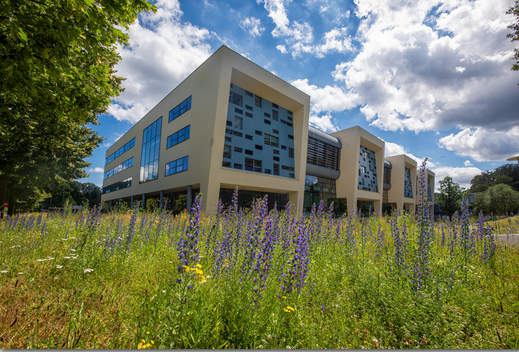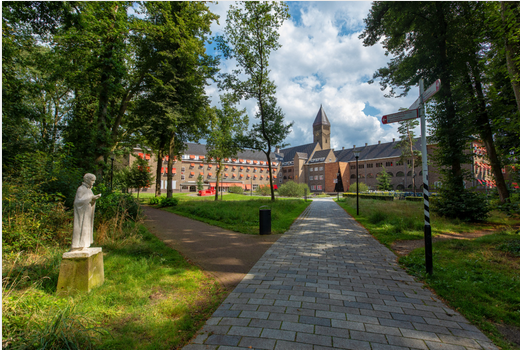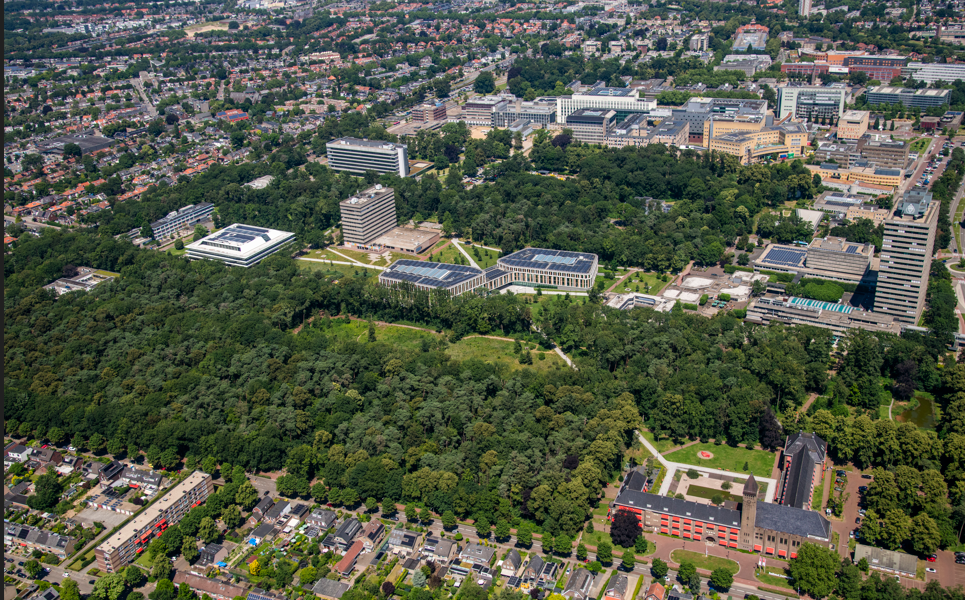Case Study
How Radboud University is Optimizing Campus Occupancy with HubStar
Keep scrolling for more on how Radboud University is using HubStar's space utilization solution, PresenceIQ, to make data-driven campus decisions, reduce operating costs, and optimize workplace and lecture hall occupancy across their most critical buildings.
41
Buildings
across the campus portfolio
10
Buildings
with PresenceIQ deployed
55000 €
Saved
through data-driven holiday building closures
"I would recommend PresenceIQ to universities with a large building portfolio to measure how buildings are actually being used."
Max Popken
Space Management Employee
Summary
Radboud University is a leading research university in the Netherlands with seven faculties, 24,000 students and 41 buildings across its campus.
Facing significant budget cuts affecting all Dutch universities, HubStar’s space utilization solution, PresenceIQ, has helped the university make data-driven decisions about space utilization, reduce operating costs and optimize workplace and learning occupancy across their most critical buildings.
Challenges
- Mounting pressure to reduce costs.
Like universities across the Netherlands, Radboud University is facing budget cuts and a declining volume of applications from new students. Use of space is, as a result, under increased scrutiny from leadership. - Gaining stakeholder buy in for space allocation decisions.
The workplace management team needs to convince building managers, department heads, and University leadership to accept space allocation changes and optimization recommendations. Without compelling evidence to support these decisions, stakeholders often resist proposals that involve reducing or reallocating their assigned space. - Increased costs for faculties from underutilized lecture rooms
Faculties were paying for empty chairs in lecture rooms, with idle hours and under booking creating unnecessary costs across the campus. The scheduling team needed new ways to match classes with the right rooms.
"We had the feeling that a floor isn't used well, but can we objectively make decisions on what should stay and what should go? We faced the challenge of clearly explaining to people what we measure and how we make the data as accurate as possible."
Max Popken
Space Management Employee

Faculty departments and administrative units have grown accustomed to their current space allocations, making any proposed changes a sensitive topic. Building managers need clear justification for modifications to their facilities, while department heads require assurance that space reductions won’t negatively impact their operations or staff satisfaction.
The university needed a way to transform these conversations from subjective negotiations into objective, data-driven discussions that stakeholders could understand and accept.
Smaller lecture rooms with a capacity of 50 people were particularly problematic, as existing WiFi analytics couldn’t provide accurate occupancy insights for these spaces. Accurate data about room usage would also help the scheduling team match classes with appropriately sized rooms and slash costs from idle hours and under booking.
Without granular occupancy data, it was difficult to identify patterns of underutilization or determine which rooms could be repurposed for other academic activities. This lack of visibility meant faculties continued to bear the cost of maintaining spaces that weren’t being used to their full potential.
The university needed accurate occupancy data for all types of space and sizes of lecture rooms. With mounting pressure to reduce costs while maintaining educational quality, the university required a solution that would provide objective, data-driven insights into space utilization across their entire portfolio.

[Watch Now] Transformational Timetabling: How to Boost Efficiency and Remove Guesswork by Leveraging Data
Budget cuts are rising while enrolment and funding pressures mount. Watch this 45-minute webinar to discover how utilization data eliminates guesswork from campus planning decisions.

Why HubStar?
-
Campus-wide occupancy data in one place
Sensors and WiFi signals provide occupancy data for small and large spaces, and PresenceIQ unifies it all in one view. - Granularity of reporting
It’s easy to analyze data by building, floor, timeframes and more, making conversations with stakeholders data driven and more effective
- Integrated occupancy and scheduling data
Sensor data and scheduling information are combined in PresenceIQ, automatically transferring insights to schedule makers and other stakeholders.
The HubStar Solution
Radboud University deployed PresenceIQ across their 10 most critical buildings, focusing on lecture halls, research spaces, and working areas. The system integrates both sensor data from smaller lecture rooms and WiFi analytics from larger spaces, providing comprehensive occupancy insights from one source of truth.
The workplace management team uses PresenceIQ data to create monthly reports for building managers and the C-suite, tracking capacity utilization and ensuring alignment with facilities management data.
The integration of occupancy data with scheduling systems shows which classes are using which rooms, making allocation more efficient and slashing the times rooms sit idle.
"My favorite feature in PresenceIQ is the trends. You can easily play with the data, compare spaces and see how they perform.”
Max Popken
Space management Employee
The Result
- €55,000 saved from temporary building closures
- Increased stakeholder buy-in from data-driven conversations
- Reduced faculty costs through more efficient scheduling
The workplace management team combined PresenceIQ data with other data points to identify the most underutilized places and times. The data revealed minimal occupancy across multiple buildings during the Christmas holiday period, helping to support the business case for temporarily closing five buildings while keeping one open for the few people who needed access.
This approach reduced heating, ventilation, and operational costs, saving the University €55,000. Sending out newsletters to faculty and staff emphasizing the sustainability benefits of the temporary closure eased the change management process, and had the additional benefit of some people taking holiday time where they may not have done before.
The workplace management team uses PresenceIQ data to answer stakeholder questions, creating custom reports that show building performance, utilization rates and trends over specific timeframes.
Building managers now receive monthly data reports, supporting informed decisions about space allocation and department assignments. Technical maintenance teams use occupancy data to optimize lighting automation and ventilation systems, particularly for 24-hour lab spaces. And finally, the leadership team receives monthly occupancy reports that support budgeting and planning for new campus build projects.
Presence IQ’s intuitive reporting simplifies the process of keeping these stakeholders in the loop, since it takes minutes to run a report that answers questions from colleagues.
"Colleagues want to see how a certain space or building is used, and it's nice to have data to guide them."
Max Popken
Space Management Employee
Under booking and idle hours were becoming increasingly costly considering that faculties pay for empty seats. By unifying occupancy sensor data from individual lecture rooms and making it accessible to schedulers, PresenceIQ supports timetabling based on actual room usage, reducing idle hours and seats and helping schedulers assign classes to the best possible room.

Looking Forward
The workplace management team has identified which buildings will be the most under-utilized during the summer months, and plans to temporarily close them, similarly to the Christmas holiday period.
Moving forward, the team has also looked into new ways to connect PresenceIQ data with existing operational systems to identify cost-saving opportunities. These opportunities include sharing data with facilities management partners to align cleaning frequency with space usage, and using occupancy data to enhance sustainability initiatives.
I would recommend PresenceIQ to universities with a large building portfolio to measure how buildings are actually being used.
Max Popken
Space Management Employee
Underutilized campus spaces draining your budget?
Stop paying to heat, cool and light empty buildings. PresenceIQ's space optimization insights can help your university save thousands by pinpointing underutilization hotspots.

Share this post














